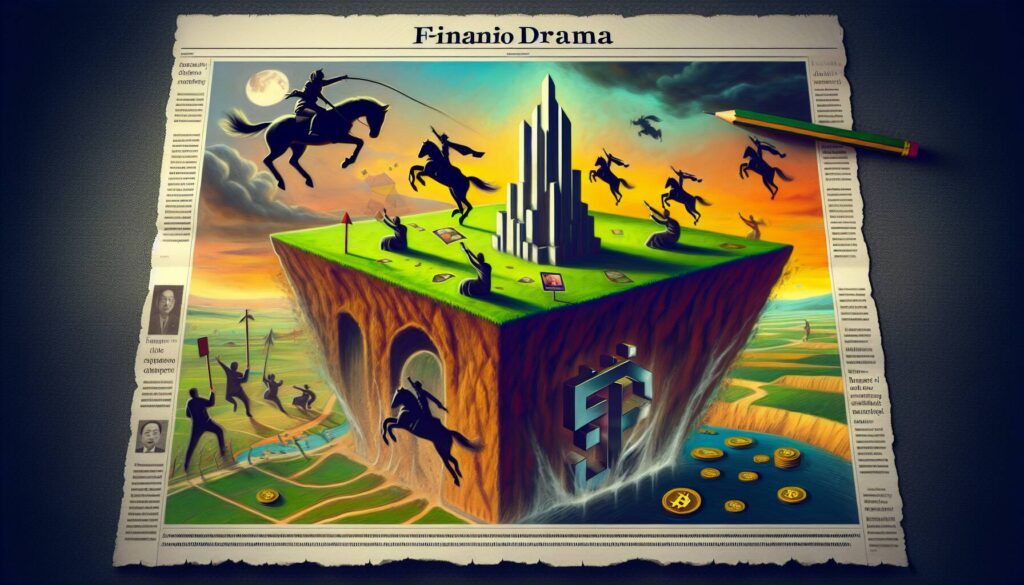In a noteworthy development for the cryptocurrency sector, concerns have been raised regarding the growing influence of U.S. dollar-denominated stablecoins within the European Union. Jürgen Schaaf, an adviser to the European Central Bank (ECB), warned that this trend could undermine the ECB’s ability to manage monetary conditions effectively. In his recent blog post, Schaaf drew parallels between the potential effects of U.S.-backed stablecoins in the EU and the challenges faced by developing economies that rely heavily on the U.S. dollar.
Stablecoins such as Tether’s USDT and Circle’s USDC dominate the market, accounting for more than 80% of the total stablecoin market cap, which recently surged to $271.8 billion following the enactment of a U.S. stablecoin law. This U.S. legislation, described as less stringent than the EU’s Markets in Crypto Assets (MiCA) regulation, may facilitate a substantial expansion of the stablecoin market, with projections suggesting it could reach $2 trillion by the end of 2028.
“U.S. dollar stablecoins may cement their early dominance unless credible euro alternatives materialise,” Schaaf noted, emphasizing the potential strategic advantages this could confer upon the United States.
As digital assets become increasingly integral to cross-border transactions, dollar-denominated stablecoins might pose significant competition for euro-based financial instruments. Schaaf highlighted that these stablecoins are also likely to be favored for tokenized settlements, given their utility in representing cash in digital transactions. To counteract these developments, he advocated for enhanced support for euro-backed stablecoins and the potential introduction of a digital euro. The latter, he posited, could serve as a vital safeguard for European monetary sovereignty.
The issue of stablecoin regulation is not confined to the EU. Other jurisdictions, including China, are exploring initiatives to establish regulated stablecoins tied to their own currencies, showcasing the global significance of this evolving landscape in the world of finance.

Impact of U.S. Dollar-Denominated Stablecoins in the EU
The potential widespread adoption of U.S. dollar-denominated stablecoins in the EU poses several implications for monetary control and financial stability.
- Threat to ECB’s Monetary Control:
- U.S. dollar stablecoins could weaken the European Central Bank’s ability to manage monetary policy effectively.
- Examples from dollarised economies indicate challenges in setting interest rates and controlling money supply.
- Market Dominance:
- The largest stablecoins, USDT and USDC, dominate the market, comprising over 80% of the total stablecoin market cap.
- U.S. stablecoin regulation could lead to market growth, potentially reaching $2 trillion by 2028.
- Competition with Euro-based Instruments:
- Dollar-denominated stablecoins might offer advantages in cross-border transactions compared to euro-based alternatives.
- Heavy reliance on stablecoins for tokenized settlements further complicates the financial landscape.
- Strategic and Economic Advantages for the U.S.:
- Dominance of U.S. stablecoins could provide the U.S. with enhanced economic influence and lower financing costs for its debt.
- Need for Euro Alternatives:
- To counter the U.S. influence, support for euro-backed stablecoins and the development of a digital euro is crucial.
- The digital euro could help protect European monetary sovereignty and provide viable alternatives for users.
“U.S. dollar stablecoins may cement their early dominance unless credible euro alternatives materialise.”
Impact of U.S. Dollar-Denominated Stablecoins on EU Monetary Policy
The rising popularity of U.S. dollar-backed stablecoins in the European Union poses significant challenges for the European Central Bank (ECB) in maintaining its monetary policy effectiveness. Analysts like Jürgen Schaaf have pointed out that if these digital assets gain traction, they could echo the complexities faced by dollarized economies, complicating the ECB’s ability to set interest rates and regulate the money supply effectively. This scenario presents both competitive advantages and disadvantages, particularly when compared to other forms of currency management and the implications for traditional payment systems.
Stablecoins such as Tether’s USDT and Circle’s USDC dominate the market, which has seen substantial growth following favorable legislation in the U.S. While this positions the dollar as a strong contender in cross-border payments, the downfalls could be severe for the euro zone’s financial autonomy. The fragmentation in monetary control could create vulnerabilities for EU member states, especially if users perceive dollar-denominated options as safer or more profitable. As such, the ECB’s ability to respond to economic fluctuations could weaken, leading to inconsistencies in financial stability across the region.
For businesses and consumers looking for payment solutions, the proliferation of U.S. stablecoins could offer attractive benefits—particularly in terms of international transactions where speed and efficiency are critical. However, this comes at the risk of eroding trust in euro-denominated financial instruments, thus creating a preference for stablecoins over traditional banking services. To counteract this shift, Schaaf emphasizes the need for the ECB to accelerate support for euro-backed stablecoins and introduce a digital euro as a viable alternative, safeguarding European economic sovereignty.
Furthermore, regulators outside Europe, particularly in China, are also recognizing the challenge posed by dollar-backed digital assets. The potential development of an offshore yuan stablecoin could introduce additional competition for the euro, further complicating the landscape. The strategic and economic advantages associated with U.S. dollar dominance may not only bolster the U.S. financial position but also create setbacks for EU policymakers attempting to regulate and promote digital currencies.

















